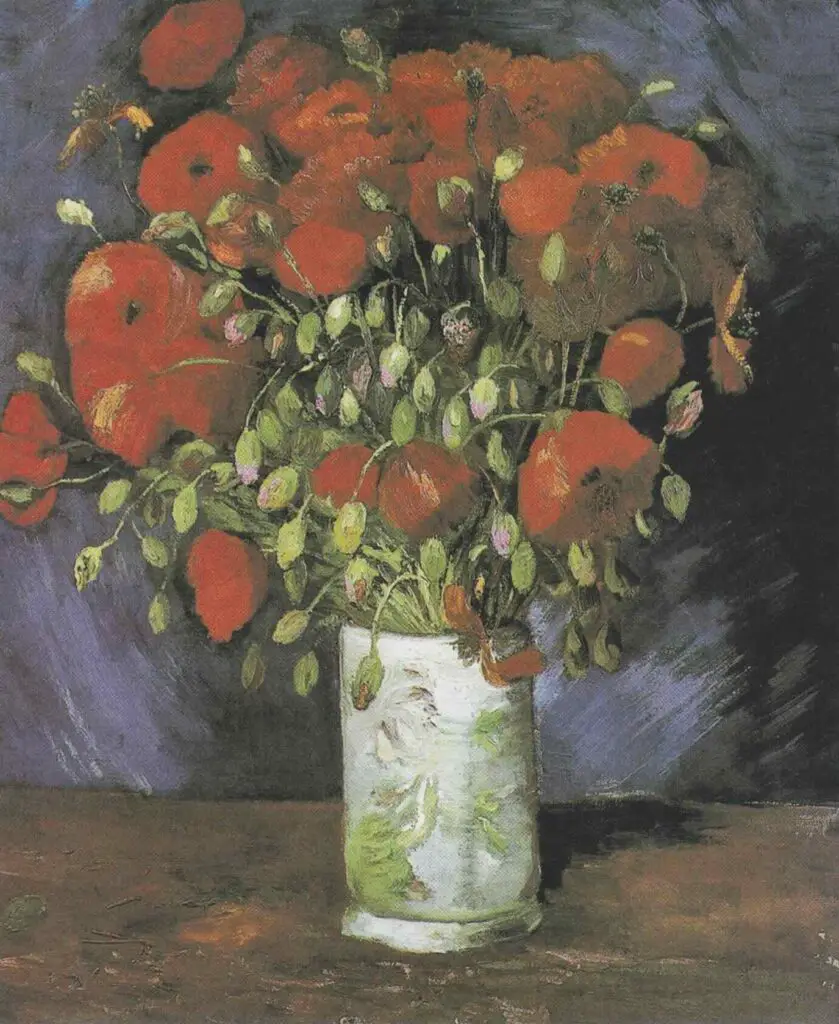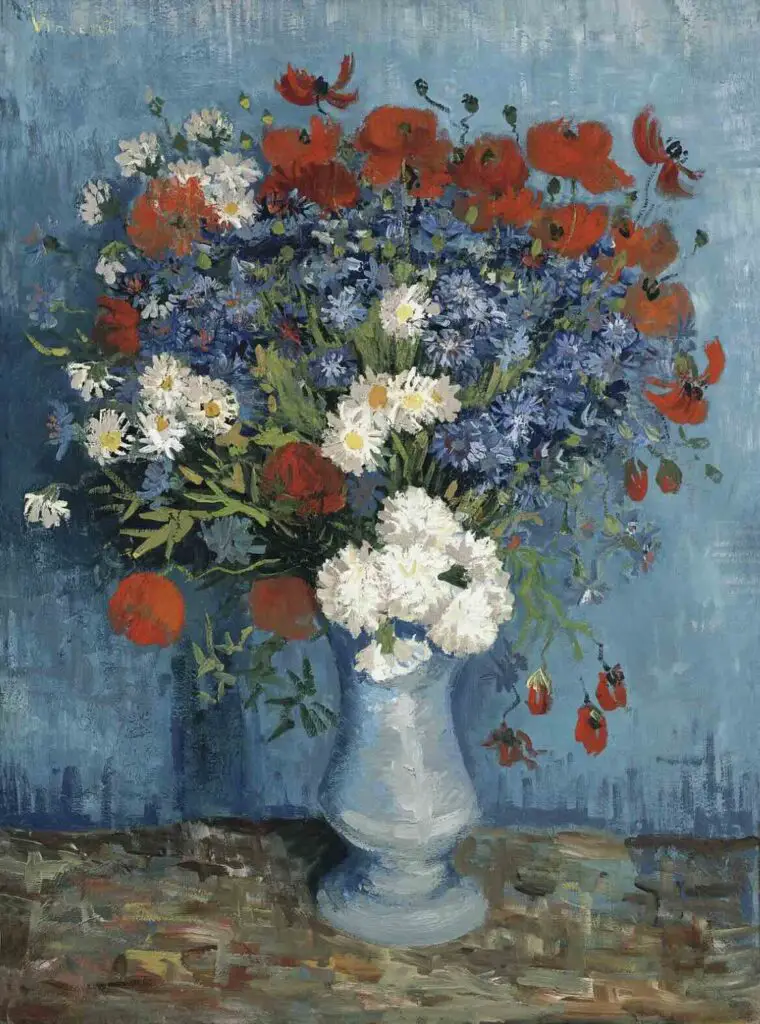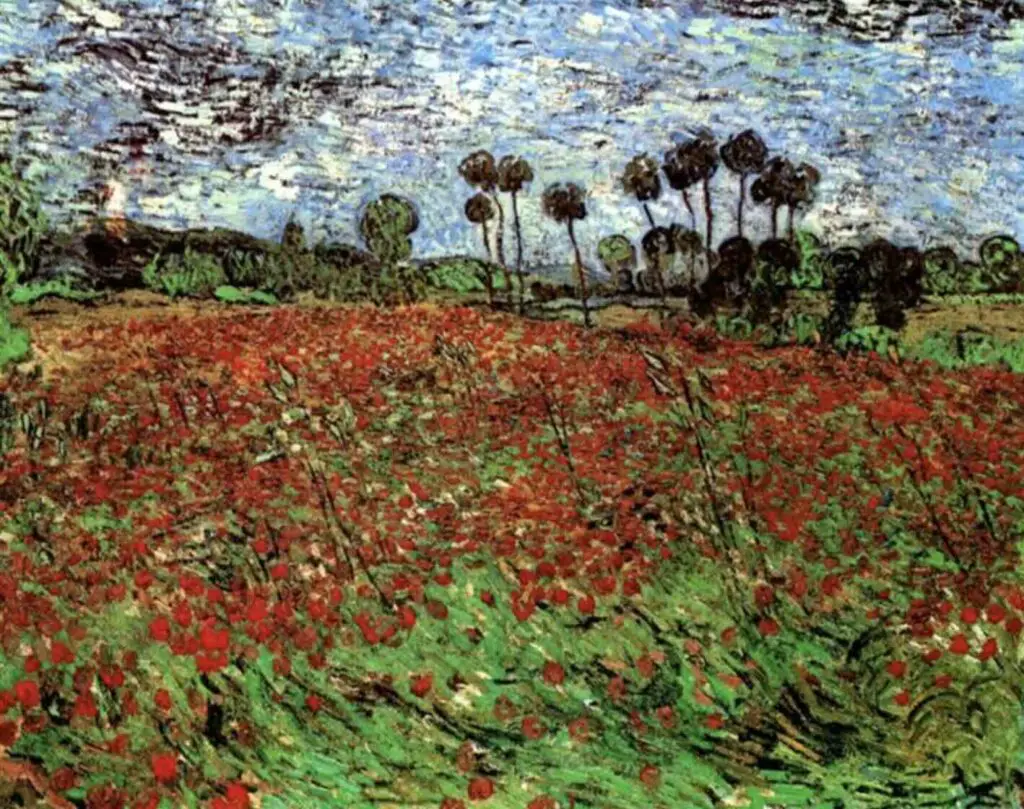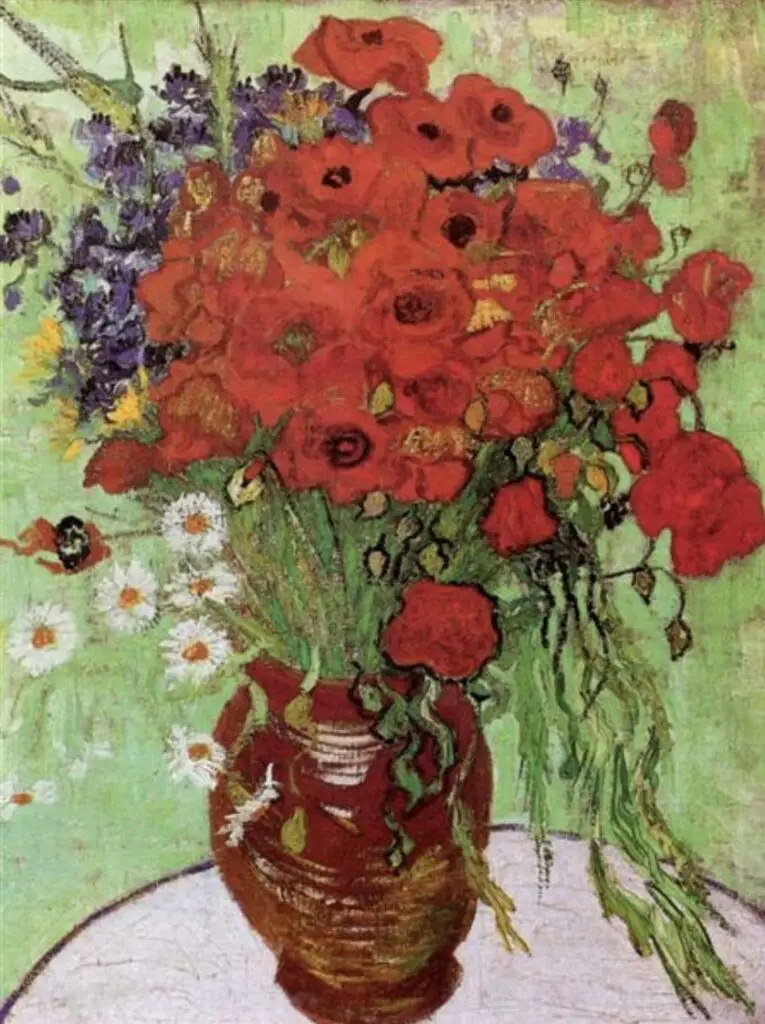Vincent Van Gogh is one of my favorite artists. He is one of the greatest artists who ever lived.
Vincent van Gogh held a deep affection for painting poppies, much like many other subjects in his prolific body of work. Read on as we delve into the captivating world of Vincent van Gogh’s poppy-themed paintings and unravel the profound reasons behind his enduring love for this floral motif.
Table of Contents
- Vincent Van Gogh And The Vibrant World Of Poppies: A Blossoming Symbol Of Life
- Van Gogh’s Exploration Of Poppies
- Why Poppies Were Significant To Van Gogh
- The Enduring Appeal Of Van Gogh’s Poppies
- Related Questions
Vincent Van Gogh And The Vibrant World Of Poppies: A Blossoming Symbol Of Life
Vincent van Gogh, the Dutch Post-Impressionist maestro, left an indelible mark on art through his unique ability to infuse life into his canvases. His fascination with the poppy flower, evident in several of his iconic paintings, reflects his deep appreciation for nature’s beauty and his pioneering use of color and symbolism.
In this exploration, we will unravel the profound significance of poppies in Van Gogh’s artistry and examine the importance of seven of his remarkable poppy-themed paintings.
The Poppies: A Floral Emblem Of Nature’s Splendor
The poppy flower, found across various regions, carries a universal charm. However, it’s often associated with the expansive open fields of the South of France, an image deeply ingrained in our collective subconscious, thanks to the popularity of Van Gogh’s numerous poppy field paintings.
These vibrant blooms grace the landscape in May and June, aligning with Van Gogh’s late spring creations.
Van Gogh’s Exploration Of Poppies
Between 1886 and 1890, Vincent van Gogh embarked on a captivating artistic journey centered around poppy flowers. He completed seven paintings featuring these blossoms, each offering a unique perspective on this floral subject.
1. Vase with Red Poppies (1886)
Van Gogh’s early foray into poppy-themed artwork can be seen in “Vase with Red Poppies.” Created in 1886 during his time in Paris, this painting captures the essence of cut poppy flowers arranged in a vase.

It exemplifies Van Gogh’s meticulous attention to color, emphasizing vibrant contrasting hues to breathe life into the canvas. The juxtaposition of red poppies against a green background foreshadows his signature style of using complementary colors to create visual impact.
2. Vase with Cornflowers and Poppies (1887)
Continuing his exploration of still-life compositions, Van Gogh crafted “Vase with Cornflowers and Poppies” in 1887. This artwork showcases his fascination with poppies and introduces cornflowers into the mix.

Once again, his mastery of color is evident in the harmonious interplay between the blue cornflowers, red poppies, and green leaves. It’s a testament to his ability to transform a simple floral arrangement into a vibrant symphony of colors.
3. Edge of Wheatfield with Poppies (1887)
“Edge of Wheatfield with Poppies” was also created in 1887, capturing the allure of poppies within the context of a wheatfield. The rich crimson of the poppy blossoms against the golden backdrop of the wheatfield embodies Van Gogh’s quest to convey life through color.

It’s a harmonious fusion of nature’s elements, with each color and brushstroke revealing the vitality of the landscape.
4. Field with Poppies (1889)
“Field with Poppies,” painted in 1889, is a testament to Van Gogh’s evolving style and dedication to capturing the essence of the natural world. The brilliant red of the poppy blooms set against the vibrant green of the alfalfa fields showcases his mastery of complementary colors.

This painting invites exploring the nuances of color and form in the natural landscape.
5. Poppies and Butterflies (1890)
“Poppies and Butterflies,” created in 1890, departs from traditional still-life compositions. It combines poppies’ beauty with butterflies’ delicate grace, offering the canvas a sense of movement and life.

This painting reflects Van Gogh’s exploration of the dynamic relationship between color and nature.
6. Field with Poppies (1890)
Another work, “Field with Poppies,” painted in 1890, further exemplifies Van Gogh’s fascination with the poppy flower. Here, the red poppies dominate the composition, creating a striking contrast against the surrounding greenery.

This painting captures the intensity and vibrancy of the poppy blossoms, inviting viewers to immerse themselves in the beauty of the natural world.
7. Still Life: Red Poppies and Daisies (1890)
Still Life: Red Poppies and Daisies,” also from 1890, is a captivating blend of poppies and daisies, showcasing Van Gogh’s ability to infuse life into even the most static subjects.

The juxtaposition of red poppies and white daisies creates a sense of balance and harmony, underscoring his skill in using color to convey emotion and vitality.
Why Poppies Were Significant To Van Gogh
Vincent van Gogh’s fascination with poppies transcends their physical beauty; it embodies a profound symbolic significance. Poppies represented life, vibrancy, and the relentless pursuit of color and light.
His use of complementary colors, such as red and green, blue and orange, and lilac and yellow, allowed him to create visually striking compositions that captured the essence of life itself.
The Enduring Appeal Of Van Gogh’s Poppies
Vincent van Gogh’s poppy-themed paintings continue to captivate audiences and art enthusiasts worldwide. Their enduring appeal lies in several key aspects:
Emotion And Expression:
These paintings are a testament to Van Gogh’s ability to infuse emotion and expression into his artwork. The vibrant colors and dynamic compositions invite viewers to connect with the artist’s passion and vitality.
Mastery Of Color:
Van Gogh’s use of complementary colors and his exploration of color contrasts set his poppy paintings apart from other still-life works. They showcase his ability to create visual impact and convey depth through color.
Celebration Of Nature:
These paintings celebrate the beauty of the natural world. They invite us to pause and appreciate the intricate details and vibrant colors of poppy blossoms, reminding us of the beauty surrounding us.
Symbolism:
In Van Gogh’s works, poppies symbolize life, hope, and the enduring power of nature. They serve as a reminder of the resilience of the human spirit and the fleeting nature of existence.
Vincent van Gogh’s poppy-themed paintings are not just artistic masterpieces but windows into the artist’s soul. They represent a journey of self-discovery, a celebration of life’s beauty, and an exploration of color and emotion.
As we gaze upon these timeless works of art, we are reminded of the profound impact that nature, color, and symbolism can have on the human spirit. Vincent van Gogh’s legacy lives on through his art, and the emotions and contemplation continue to stir in the hearts of those who encounter it.
Anita Louise Art is dedicated to art education, great artists, and inspiring others to find and create their art. We love art that uplifts and inspires. #ArtToMakeYouSmile! #ArtToMakeYouHappy!
If you are interested to see any of my art, you can find out more by clicking here. If you are interested in what inspires me and my paintings, you can discover more by clicking here.
We have a free newsletter and would love you to be part of our community; you can subscribe to the newsletter by clicking here. If you have any questions, I would be happy to talk to you anytime. You can reach me, Anita, by clicking here.
Subscribe to our Anita Louise Art YouTube Channel with great videos and information by clicking here.
Join us for our podcast “5 Minutes With Art.” Spend just 5 minutes a week with us to discover and learn about great art and artists. You can find out more about our podcast by clicking here.
Related Questions
Immersive Van Gogh Exhibit – Taking Photos And Other Tips
Before we entered the Immersive van Gogh Exhibit, the girl checking our ticket told us that photos were allowed and encouraged, but she added that flash photography was not allowed. While at the exhibit, I took a lot of pictures and saw a lot of other people also taking photos.
By clicking here, you can discover more by reading Immersive Van Gogh Exhibit – Taking Photos And Other Tips.
Similarities Of Claude Debussy And Claude Monet
Claude Debussy is a musical composer. Claude Monet is an artist. They are both considered Impressionists and were not afraid to break from the tradition of their day to create something new. Both Debussy and Monet greatly influenced many artists that went after them.
By clicking here, you can learn more by reading Similarities Of Claude Debussy And Claude Monet.
What Are Some Japanese Woodblock Print Characteristics?
There are many characteristics of a Japanese woodblock print, from the woodblock print title, artist name, and publisher’s seal; other features also include the color and subject matter. Japanese woodblock prints also have different artistic art movements.
By clicking here, you can learn more by reading What Are Some Japanese Woodblock Print Characteristics?.

